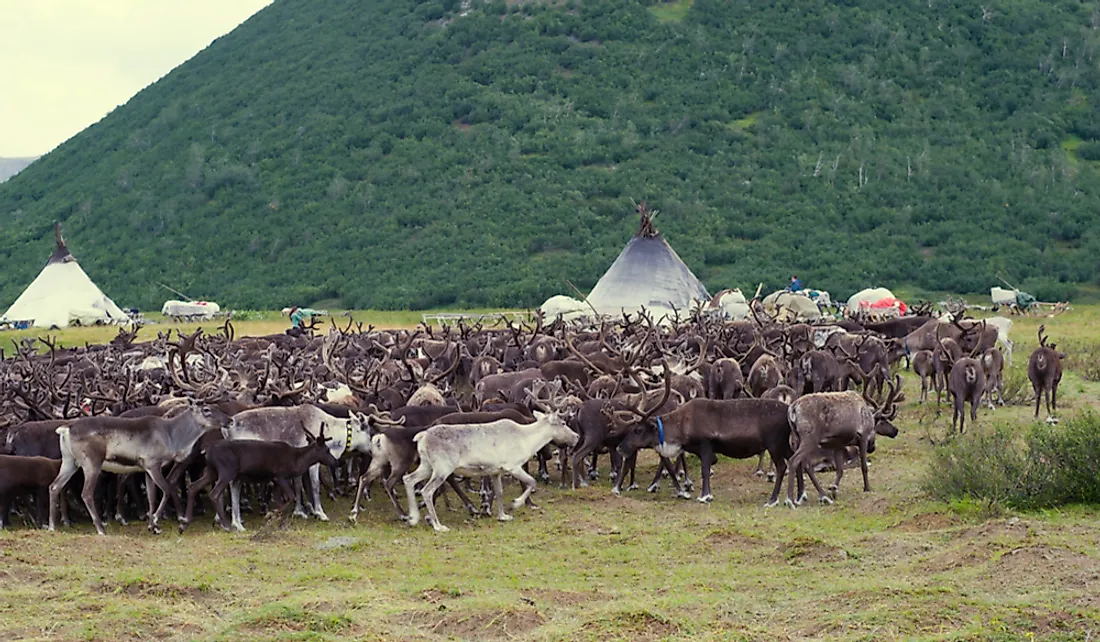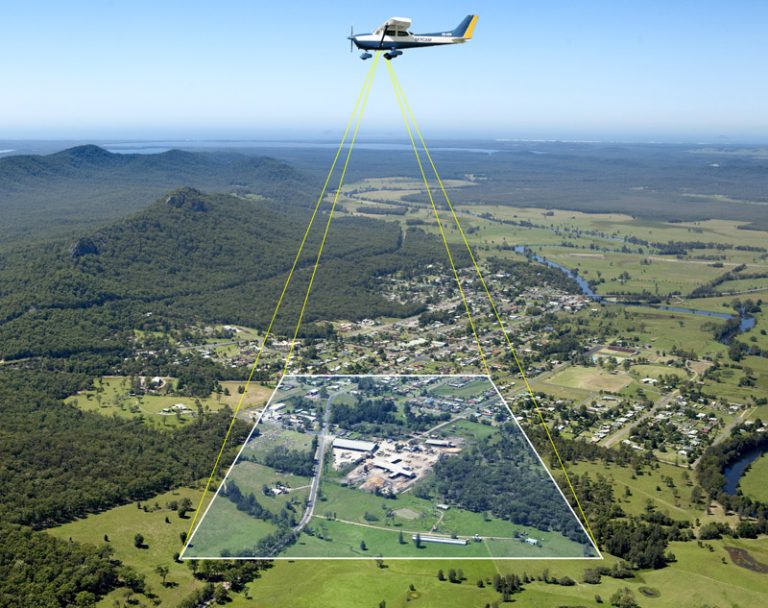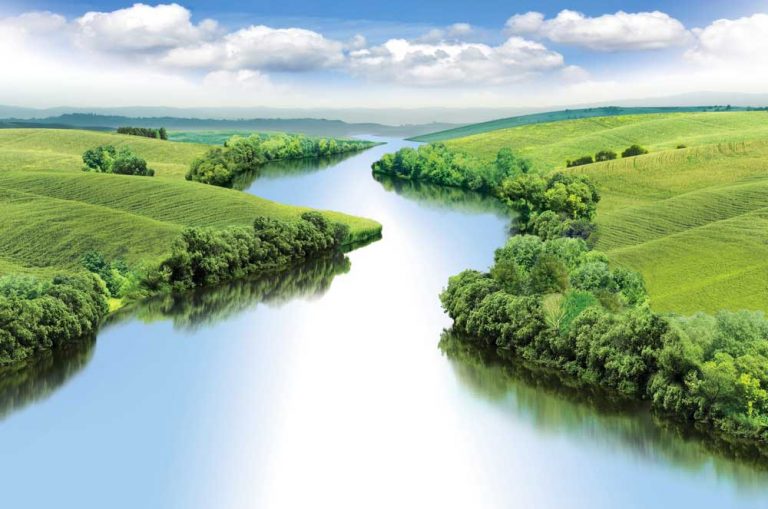TOPIC 2: AGRICULTURE | GEOGRAPHY FORM 2
It is categorized as a primary activity since it involves the production of raw materials that can be used by other industries.
SMALL SCALE AGRICULTURE
It is the type of agriculture (crop cultivation) where a farmer owns a piece of land covers less than 5 hectares.
Characteristics of small farming at subsistence level
1. Labor force involves the use of members of the families
2. Implication of simple tools like hoes, pangas to cultivate and few cases they use animals.
3. There are varieties of ways to improve the fertility such as the use of organic manure, mulching (covering the top soil with dead crops and animal remains to retain moisture),
4. Many crops are grown at once. You can find the farm with mixed crops such as beans, maize, sunflower and some watermelon.
5. Very little or no surplus. This is because subsistence agriculture is for consumption.
6. The land cultivated for subsistence farming is always small
7. Little or no use of technology inform of seeds, manure and tools.
8. The common are maize (African staple food), millet, sunflower, fruits and vegetables.
Effects of rapid population growth on small scale agriculture
population; is the demographic situation where number of people at a given area is greater than the available resources. The available resources may include; Land, Water, Minerals etc.
Over population is sometimes called population pressure Continuous increase in the number of people is serious problem facing small scale agriculture because: it reduces the average size of land, results to over exploitation which lead to reduced soil fertility.
In the other side increasing population has increased amount of labour force in agriculture.
Advantages of small scale agriculture
i) It is costless because easy to control farm work
ii) More than one crop can be obtained from the farm [one plot]
iii) Provide employments to the family members Disadvantages Difficult in applications of machines such as tractors is because of small farming size.
Low productivity hence poor standard of living Gender imbalance: because women are not involved in land heritage and ownership Heritage of land leads to land fragmentation and over population in a small piece of land hence results into shortage of land

TYPES OF SMALL SCALE AGRICULTURE
There are two types of small scale agriculture;
a) Shifting cultivation/ non sedentary
b) Bush fallowing /rotational
SHIFTING CULTIVATION (NON SEDENTARY)
Is the system in which a peasant keeps on shifting from one area to another as a result of soil exhaustion.
In this type of agriculture peasants cultivates certain piece of land until the soil is exhausted after 2-5 years then shifts to a new piece of land where he cleans and cultivates.
It is the oldest method.
Done by burning of trees on a given area and set the area ready for cultivation The crops grown most of them being scanty crops It involves slashing and burning of bushes and grasses
It is practiced when there is low population for easy shifting and possession of a certain piece of land Production is for subsistence Simple tools are used like hand hoes because of low technology
The cultivators do not have permanent settlements since they expect to leave any time , sites are selected in the virgin forest and therefore tend to be fertile
Advantages
1) More than one crop can be harvested in a plot
2) Burning involves production of ashes which assist in soil fertility
3) Food supply is assured since the family cultivates for self-sufficient basics
4) The system does not cost since simple tools are used for production
5) Family labour is used in the production process
Disadvantages
1) Deforestation and soil erosion
2) The use of fire kills [destroys] the natural habitats and wild animals
3) The system can be applied on the low populated areas
4) Low productivity because the plots are small and due to poor control of pests and diseases.
5) Destruction of ozone layer due to burning of bushes and grasses.
Decline of shifting cultivation Shifting cultivation nowadays due to the following reasons;
Increased population Rapid increase of population has resulted in the shortage of land for cultivation Advancement of science and technology Influence of government policy which encourages on sedentary and other farming types which are environmental friendly Reaction from environmentalists Engagement of people in other economic activities
ROTATIONAL (BUSH FALLOWING)
Is the system of farming in which peasant cultivates in a certain area until it gets exhausted and leave it for a certain period of time to regain its fertility.
It differs from shifting cultivation in that farmers are settled and hence are rotating rather than shifting to a new home.
Rotational bush fallowing is the simplest form of sedentary farming. This system took place after shifting cultivation failed to perform well due to increase in population.

Characteristics of Rotational/Bush fallowing
Simplest tools are used through slightly more advanced technology than shifting cultivation Slashing and burning of bushes
The community can involve or engage itself into other activities like fishing, hunting etc Farmers are settled but the farms are the ones which are rotating.
Advantages
Since the people are settled they engage fully and effectively in the production process. Slashing and burning involved in the farm preparation adds fertility to the land Fallowing gives room for the improvement of the soil and encourages the recovery of vegetation
It takes places where there is high population unlike shifting cultivation Farmers can involve in other economic activities such as fishing
Disadvantages
There is low production because of the use of low technology and simple tools Slashing and burning can lead to environmental degradation as well as loss of biodiversity Poor trade among communities
How small scale agriculture is improved In order to improve small scale farming the following should be done i.e.
i) Proper ways of using fertilizers and pesticides etc
ii) To educate farmers 0n good farming methods/practices
iii)To discourage some traditional ways of life i.e. sex preference
iv) Farmers should be given loans
v) To establish market for selling crops
vi) The government should facilitate good transport and communication network vii) To encourage people to have permanent settlements so that they can organize their farms
LARGE SCALE FARMING
Is a type of agriculture which takes place in a large area of land approximately 100 hectares. This is also known as commercial agriculture or state agriculture.
The money gained from large scale agriculture is essential for keeping the system going on. The type of farming practiced is normally monoculture.
In developing countries monoculture is associated with tropical and sub-tropical plantations which were established through European colonization.
The most pronounced from large scale agriculture is plantation agriculture

Characteristics of large scale farming
Involves the production of cash crops Only one crop is produced [monoculture] Farms are very large found in sparsely populated areas Use of high levels of technology [tools are very much modern ] hence high capital. It involve the use of skilled and unskilled labourers.
Advantages of large scale agriculture
1) Productivity is very high and large amounts of capital/income is obtained
2) Risk of pests and diseases is highly reduced
3) Promotes the growth of other sectors
4) Promote the development of social services i.e. Housing Electricity And water supply
5) Provides employment to the people.
6) It is the source of foreign money exchange.
Disadvantages of large scale agriculture
1) Large capital is needed
2) Fluctuation of price in the world market [the farmers may face loss when the price falls down]
3) It causes unequal development in different areas
4) Loss of soil fertility due to continuous application of artificial fertilizers for example ammonia sulfate
5) It involves the exploitation of workers
6) It causes air pollution
7) It may cause separation of people away from home.
Problems facing large scale agriculture
(1) Population increase which resulted into short age of land.
(2) Lack of Government support.
(3) Loss of soil fertility due to the act of practicing monoculture. How large scale agriculture is improved.
(4) The Government should enact and implement laws about population increase e.g family planning policy.
(5) The Government should improve transport and communication systems such as railways, roads etc.
(6) The Government should control rural-urban migration to overcome the problem of labour supply
(7) The Government should provide loans/capital to the farmers
(8) The Government/stakeholders should encourage the use of modern farming methods such as the use of machine and fertilizer
PLANTATION AGRICULTURE
Refers to the large farm or large area of land designed for agricultural growth. Often includes housing for the owner and workers. The crops planted for commercial purposes.
Major African countries involving in plantation agriculture Palm oil are found in Nigeria and DRC, Rubber –Liberia, Sisal – Tanzania (Morogoro, Tanga), Tea – Malawi and Kenya, Sugar – South Africa, Tobacco – Zimbabwe & Tanzania (Lyamungu) and Cotton –corn-USA.
The major crops grown in plantation agriculture includes the following.
COFFEE
There are several types of coffee but the famous ones are three;
a) Arabica; Have large leaves and can grow to 9m high; It has the finest flavor
b) Robusta; They grow up to 5m tall
c) Liberica; It is a low land coffee Uses of coffee Beverage packing Source of income Leaves are used as medicine to treat stomach aches Trees are used as fire wood Pulps are used for fertilizers
The chief producers of coffee in the world are such as; Brazil Columbia Ivory coast. And the other percent comes from Mexico Uganda Indonesia Ethiopia India In Tanzania coffee is produced in Mbeya, Arusha, Kilimanjaro and Bukoba.
COTTON
It is an annual crop which is divided into three varieties basing on the size of the fibrous and the lint. It is grown in Egypt and Persia. In Kenya, cotton is grown in Nyanza district while in Uganda cotton is grown in the Buganda District.
TEA
Tea is grown in Tanzania mainly in Mbeya, Bukoba, Iringa, Kagera and Tanga regions. Cotton In Kenya, cotton is grown in Nyanza district while in Uganda cotton is grown in the Buganda District.
SISAL
In Tanzania sisal is mostly grown in Tanga, Kilimanjaro, Arusha, Morogoro, Lindi and Mtwara regions. Mombasa, Thika, Murang’a, Machakos and Taita Taveta are areas where sisal is produced in Kenya. WHEAT
The wheat yields in the world are highest from countries of Western Europe. The following are leading producers of wheat: Russia, USA, China, India, Canada France, Turkey, Australia, Pakistani, German, Romania, Italy and Argentina. In East Africa, Kenya is the leading procedure of wheat followed by Tanzania.
LIVESTOCK/ PASTORAL FARMING
It is the keeping/rearing of animals (goats, cattle, sheep) and poultry (birds) .It can be distinguished into traditional (subsistence) livestock keeping and modern(commercial) livestock keeping
(1) TRADITIONAL/SUBSISTENCE LIVESTOCK KEEPING SEDENTARY LIVESTOCK KEEPING
Livestock are kept in one permanent place. Food and water are brought to the animals hence zero grazing because no grazing is involved.
PASTORALISM
Pastoralism is an economic activity which involves grazing livestock (animals) on natural pastures. The pure pastoral societies of East Africa include: Maasai, Karamajong. The cultivator pastoralists (mixed farmers) include the Sukuma, Gogo and Nyamwezi.
NOMADIC PASTORALISM
Is practiced by wondering groups of people in remote areas especially semi –desert and desert areas.
Nomads are members of a group of people who having no fixed home, move around seasonally in search of food and water.
The farmers specialize in keeping animals on natural pasture land for example, Masai, Barbaigs, Kwavi, Karamajong.
They keep on moving looking for water and grazing land (pasture)
They live in simple temporary houses Their wealth depends on number of cattle they have thus they do not sell their animals unless are exchanged for necessary requirements
Hence the problem of overstocking, soil erosion and desertification, also they may cause sedentary cultivator. E.g. – Gogo pastoral & Gogo sedentary – Kwavi pastoral & Kwavi sedentary – Maasai pastoral & Kaguri sedentary – Kurya pastoral & Wagita sedentar

CHARACTERISTICS OF NOMADIC PASTORALISM
(ii) The breeding process is uncontrolled
(iii) The herds are large in size
(iv) There is poor control of pests and other diseases
(v) The animals are of poor quality and low value
(vi) It takes place where the population is scarce
(vii) There is no permanent settlement as farmers move constantly with animals
(viii) There is no crop cultivation and therefore animals are the support for family life.
(ix) There is poor or no use of technology.
ADVANTAGES OF NOMADIC PASTORALISM
i) It is cheap
ii) It guarantees food for the family especially when the animals are many
iii) Some traditional varieties of animals are resistant to diseases and other environmental hardships
DISADVANTAGES OF NOMADIC PASTORALISM
i) The animals produce little milk and of low value
ii) A lot of time is wasted moving from one place to another
iii) This system of livestock keeping causes soil erosion and desertification
iv) Many animals perish due to lack of pests control
SEMI-NOMADIC/SEDENTARY PASTORALISM
This is the system of livestock keeping in which a farmer has started selling and began growing crops to supplement pastoral activities.
The farmers travel from their home state with their herds to distant places grazing, in search of pasture and water especially during the dry season.
SEDENTARY LIVESTOCK FARMING
This is a system of livestock keeping where by a farmer keeps animals while settled permanently in one place.
FACTORS FOR THE CHANGE FROM NOMADIC PASTORALISM TO SEDENTARY LIVE STOCK FARMING
i) Population increase has decreased the size of the pasture
ii) Involvement of farmers in other economic activities
iii) Advancement of technology iv) Government advice
CHARACTERISTICS OF SEDENTARY LIVESTOCK FARMING
i) More advanced technology is used
ii) The number of animals is not so high
iii) The animals are kept in shades
iv) There is disease control
v) It can be practiced in relatively densely populated areas e.g. town
ADVANTAGES OF SEDENTARY LIVE STOCK FARMING
i) The animals are healthy and hence have high yields
ii) There is a disease control
iii) The method encourages the improvement of the environment
iv) Sedentary live stock keeping enables the farmer to engage themselves in other activities.
(2) COMMERCIAL LIVESTOCK FARMING
– Beef farming is keeping of animals for production of meat for sale
– Dairy farming is keeping of animals for production of milk for sale Commercial livestock farming is more developed in the temperate grasslands such as the prairies of USA and Canada, the pampas of Argentina and the downs of Australia.

CHARACTERISTICS OF COMMERCIAL LIVESTOCK FARMING
(i) Commercial livestock farming takes place in ranches which occupy thousands of hectares.
(ii) It is characterized by the application of modern scientific and technology methods.
(iii)It normally involves the use of improved breeds or hybrids in order to advance high yields.
(iv) It is capital intensive, substantial amount of capital is required for farm machinery and fencing.
(v) Large amount of animals is kept for commercial purpose (sale) rather than for subsistence purpose.
ADVANTAGE OF COMMERCIAL LIVESTOCK FARMING
(i) It stimulates the development of other sectors such as industry
(ii) It reduces unemployment through creating employment chances
(iii) It generates government revenue
(iv) It provides food products such as meat and milk.
(V) They are source foreign exchange.
DISADVANTAGES OF COMMERCIAL LIVESTOCK FARMING
(i) It involves ranches which are expensive to maintain and establish.
(ii) It needs large areas with scarce population; therefore it cannot take place where the population is high.
(iii) It may cause environmental problems such as land degradation, deforestation.
(iv) It influences climate changes due to deforestation in order to establish ranches. Comparative study of livestock keeping between Australia and Tanzania. Livestock keeping in Tanzania and Australia has some similarities and differences Similarities
Similarities
(1) Livestock keeping in both countries there are common types of livestock kept. There mainly cattle, goats, sheep and poultry.
(2) Animal products ad like animals are sold in both countries, some common products meat, milk, skin, etc.
(3) In both Countries are practiced at both the subsistence ad commercial levels.
(4) Sedentary livestock keeping is practiced in both countries. This is done in areas that are highly populated .E.g. Chagga in Tanzania
(5) Ranching in Tanzania ad Australia is carried out in the sparsely populated areas. In Tanzania, It is mainly carried out i areas such as Kagera, Tanga, and Morogoro which in Australia this is practiced in the areas. Referred to as outback.
Differences
(1) In Australia more scientific methods are employed in the management and running of livestock keeping compared to Tanzania. Australia they use paddocks, animal food supplements and proper animal health care.
(2) Livestock keeping in Australia is more advanced than in Tanzania For example when it comes to use of machinery in activities such as milking ad sheep shearing.
(3) Pastoralism and sedentary livestock keeping ad the main types of livestock keeping practised in Tanzania while in Australia, ranching in the main type of livestock keeping.
(4) In Tanzania main types of animals kept are cattle while in Australia main types of animals kept are sheep.
(5) Ranching in Tanzania ad Australia is carried out in the sparsely populated areas. In Tanzania, It is mainly carried out in areas such as Kagera, Tanga and Morogoro while In Australia; this is mainly practiced in the areas.






























































Major thanks for the post.Really thank you! Fantastic.
I really liked your blog.Really looking forward to read more. Really Great.
[url=http://cheapdrugs.store/#]ed natural treatment[/url]
Very good post.Really thank you!
Very neat blog.Much thanks again. Will read on…
Major thankies for the post.Really thank you! Fantastic.